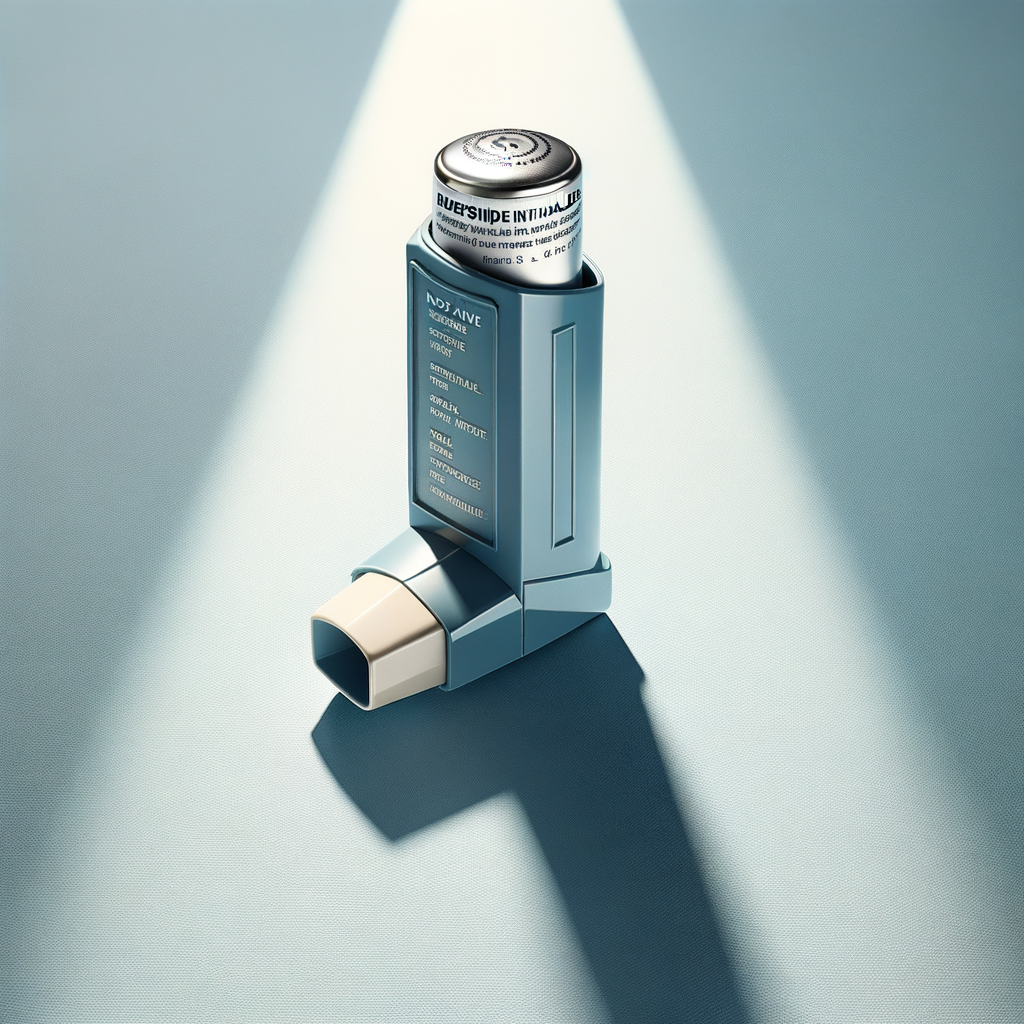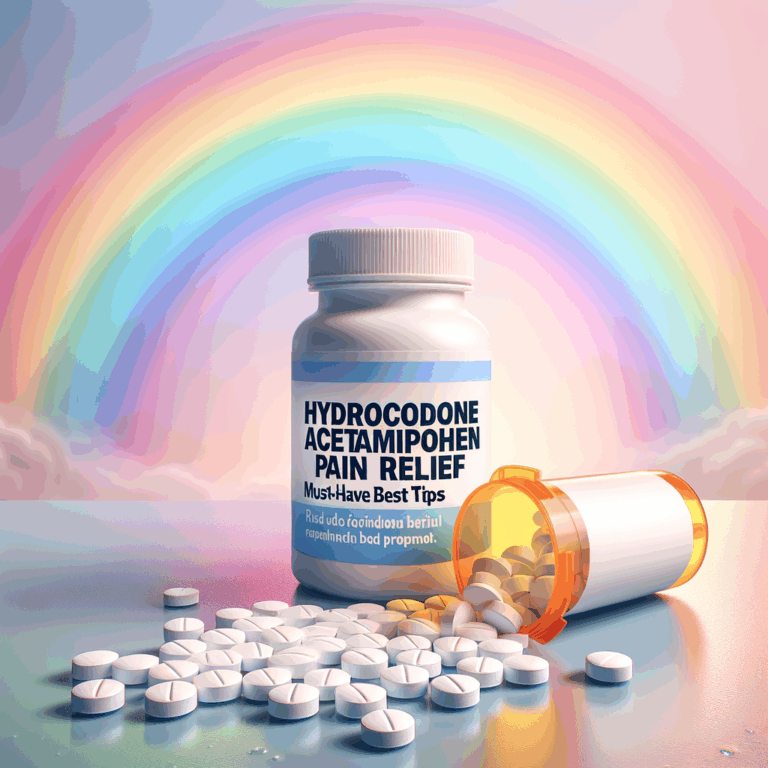
H2: Why This Guide Matters for Budesonide Inhaler Instructions
Budesonide inhalers play a crucial role for many people with asthma or chronic obstructive pulmonary disease (COPD). Yet, incorrect use reduces their effectiveness. Therefore, clear instructions help you get the best results.
This guide focuses on simple, practical steps. It uses plain language and actionable tips. As a result, you can use your inhaler confidently and safely.
H2: What Is Budesonide and How It Works
Budesonide is an inhaled corticosteroid. It reduces inflammation in the airways, so breathing becomes easier. Unlike rescue inhalers, it prevents symptoms over time rather than stopping an attack immediately.
Doctors prescribe budesonide for maintenance therapy. You usually take it daily to lower flare-ups. Consequently, consistency matters for long-term control.
H2: Types of Budesonide Inhalers and Devices
H3: Common Device Types
Budesonide comes in several forms. These include metered-dose inhalers (MDIs), dry powder inhalers (DPIs), and nebulizer solutions. Each type works well when used correctly.
MDIs release a measured spray. DPIs deliver a powdered dose when you inhale strongly. Nebulizers convert liquid into a mist for slow breathing.
H3: Choosing the Right Device
Your healthcare provider helps you choose the best option. They consider your age, inhalation strength, and ability to coordinate breathing with the device. For example, young children may need a spacer.
Moreover, cost and convenience also matter. For travel and daily use, compact inhalers may be easier to carry.
H2: How Budesonide Inhaler Works: A Simple Explanation
Budesonide targets airway inflammation directly. It reduces swelling and mucus production in the lungs. Over weeks, it lowers your sensitivity to triggers.
Because it acts locally, systemic side effects are usually low. Still, long-term use can have risks. Regular check-ups help monitor therapy and adjust doses if needed.
H2: Before You Start: Important Preparations
H3: Check the Prescription and Label
First, read the prescription closely. Confirm the dose, device type, and frequency. Also, note any special instructions, such as shaking the inhaler or rinsing the mouth after use.
Second, inspect the device. Ensure the mouthpiece is clean and the canister is not empty. If you notice damage, get a replacement before use.
H3: Gather Necessary Accessories
Some inhalers work better with accessories. Spacers improve coordination with MDIs. Masks or holding chambers help children and older adults. Also, keep a timing device to track doses.
Finally, keep water and a towel nearby for mouth rinsing after inhalation. This step reduces oral thrush risk.
H2: Step-by-Step Budesonide Inhaler Instructions (MDI)
H3: Preparation Steps
1. Shake the inhaler well for 5 seconds.
2. Remove the cap and check the mouthpiece for debris.
3. Breathe out fully to empty your lungs.
Shaking mixes the medicine and propellant. Exhaling first helps you draw the dose deep into your lungs.
H3: Inhaling the Dose
1. Place the mouthpiece between your teeth and seal your lips around it.
2. Start a slow, deep breath while pressing the canister to release the spray.
3. Continue to inhale for 3–5 seconds.
If you can’t coordinate pressing and inhaling, use a spacer. With a spacer, press first, then inhale slowly.
H3: After Inhalation
Hold your breath for 5–10 seconds after inhaling. Then breathe out slowly through your nose. Wait about 30–60 seconds before a second puff if your dose requires it.
Finally, rinse your mouth with water and spit it out. This step helps prevent oral thrush and throat irritation.
H2: Step-by-Step Budesonide Inhaler Instructions (DPI)
H3: Preparation Steps
First, load the dose as instructed by the device guide. Often, you twist or slide parts to prepare one dose. Do not shake a DPI.
Second, exhale fully away from the device. Moisture and breath can affect the powder.
H3: Inhaling the Dose
Place the mouthpiece between your lips, forming a tight seal. Then, inhale quickly and deeply for 2–3 seconds. Do not breathe out into the device.
After you inhale, hold your breath for 5–10 seconds. Finally, exhale slowly away from the device.
H3: After Inhalation
If you need a second dose, follow the same steps. Keep the device dry and at room temperature. Also, avoid tilting the DPI during inhalation.
H2: Instructions for Budesonide Nebulizer Solutions
H3: Preparing the Nebulizer
Wash your hands and clean the nebulizer parts. Mix the budesonide solution as directed by your provider. Use the prescribed solution and concentration only.
Assemble the nebulizer and connect it to the tubing and compressor. Sit upright for optimal lung expansion.
H3: Using the Nebulizer
Place the mouthpiece or mask in position and breathe normally. Continue until the mist stops, usually 5–15 minutes. Do not talk or cough too much during treatment.
After the session, turn off the compressor and clean the parts. Store leftover medication per instructions.
H2: Using a Spacer with Budesonide MDIs
H3: Why Use a Spacer?
Spacers hold the medicine in a chamber so you don’t have to coordinate pressing and inhaling. They increase the amount of drug that reaches the lungs. Consequently, spacers reduce throat side effects.
H3: Proper Spacer Technique
Attach the inhaler to the spacer firmly. Press the canister once and inhale slowly within 5–10 seconds. If your spacer has a valve, breathe in and out normally without removing the mouthpiece.
Clean the spacer regularly using warm, soapy water. Rinse and let it air dry to maintain performance.
H2: How Often to Use Budesonide and What to Expect
Budesonide works over time. You should notice fewer symptoms after a couple of weeks. However, full benefits may take 4–6 weeks.
Use budesonide every day as prescribed, even when you feel well. Do not use it for sudden wheezing. Always carry a rescue inhaler for immediate relief.
H2: Common Mistakes and How to Avoid Them
H3: Mistake: Skipping Doses
Many people skip doses when they feel better. This approach reduces long-term control. Set a routine and use reminders to stay consistent.
H3: Mistake: Poor Inhalation Technique
Users often breathe too quickly or too slowly. Follow the steps for your device carefully. Practice with a healthcare provider if needed.
H2: Side Effects and How to Manage Them
H3: Local Side Effects
The most common local side effects include throat irritation and oral thrush. Rinse your mouth after inhaling to reduce these risks. Using a spacer also lowers throat exposure.
H3: Systemic Side Effects
Though rare, long-term use can affect bone density, growth in children, or eye pressure. Your doctor monitors these risks with periodic checks. Adjustments can reduce side effects.
H2: Interactions and Precautions
Some medicines and conditions affect budesonide safety. For example, strong antifungal or antiviral drugs can increase steroid levels. Always tell your provider about all drugs and supplements you use.
Moreover, inform your provider if you are pregnant, breastfeeding, or have liver disease. They will weigh the benefits and risks.
H2: Travel and Storage Tips
H3: Storage Best Practices
Store inhalers at room temperature away from heat and direct sunlight. Avoid freezing. Keep inhalers out of reach of children.
Check the expiration date. Discard expired or damaged devices. Also, carry a spare inhaler when traveling.
H3: Travel Considerations
For air travel, bring your inhaler in carry-on luggage. Keep the prescription or doctor’s note handy for security. If flying internationally, pack enough doses plus a few extra.
H2: Cleaning and Maintenance of Inhaler Devices
H3: MDI Cleaning
Clean the MDI mouthpiece weekly. Remove the canister and rinse the plastic case in warm water. Let it air dry completely before reassembling.
Do not put the metal canister in water. Keep the nozzle clear of obstructions.
H3: DPI and Nebulizer Cleaning
Wipe the DPI mouthpiece with a dry cloth. Avoid using water unless the manufacturer permits it. For nebulizers, disassemble and wash daily. Sterilize components as instructed.
H2: When to See a Doctor
Contact your doctor if symptoms worsen or do not improve after a few weeks. Seek immediate care for severe worsening, such as increased breathlessness or blue lips. Also, report side effects like vision changes or unexplained bone pain.
Your provider will assess your inhaler technique, adjust medications, and run tests if necessary.
H2: Tips for Parents and Caregivers
H3: Teaching Children Proper Use
Show children each step slowly and let them practice with an empty device. Use a spacer and mask for young children. Praise them for proper technique to build confidence.
Also, set a schedule and make medication time into a calm routine. Keep a chart to track doses.
H3: Special Considerations for Older Adults
Older adults may have coordination or strength issues. Use spacers or nebulizers if needed. Regularly review medications to avoid interactions.
Offer reminders and place inhalers in an easy-to-reach spot. Check technique often.
H2: Monitoring Treatment: What to Track
Keep a symptom diary that logs daily symptoms, peak flow measurements, and inhaler use. Look for patterns like nighttime coughing or exercise-induced symptoms. Share this data with your doctor.
Also, track side effects and missed doses. This information helps your provider make better treatment decisions.
H2: Frequently Recommended Dosing Schedules
Below is a simple comparison of common dosing patterns. Always follow your doctor’s prescription.
Table: Typical Budesonide Inhaler Dosing Examples
– Low dose adult maintenance: 200–400 mcg once or twice daily (device and brand dependent)
– Moderate dose adult maintenance: 400–800 mcg daily in divided doses
– Pediatric dosing: Varies by age and weight; follow pediatrician instructions
– Nebulizer solutions: Prescribed amounts per session, often once or twice daily
Note: These are examples only. Your individual dose may differ.
H2: How to Switch Devices Safely
If you need to switch brands or device types, consult your provider. They may show you the new inhaler technique and adjust the dose. In some cases, the dose does not translate 1:1 between devices.
After switching, monitor symptoms and side effects closely. Schedule a follow-up to confirm the new plan works well.
H2: Practical Tips to Remember Every Day
– Keep your inhaler clean and dry.
– Rinse your mouth after use.
– Use a spacer for MDIs when possible.
– Carry a rescue inhaler for emergencies.
– Set reminders to avoid missed doses.
These simple actions preserve medication effectiveness and reduce side effects. Small habits lead to better control.
H2: How Pharmacists Can Help
Pharmacists provide device demonstrations and check your technique. They can answer questions about storage, interactions, and side-effect management. Ask them to show you how to use your inhaler before you leave the pharmacy.
They also alert you if your inhaler shows low dose indicators or is near expiry. Use their expertise to avoid common pitfalls.
H2: Cost and Insurance Considerations
Budesonide inhalers vary in price. Generic options usually cost less and work similarly. Check insurance coverage and manufacturer coupons to reduce out-of-pocket costs.
If cost prevents consistent use, discuss alternatives with your provider. They can recommend programs or a therapeutic substitute.
H2: Myths and Facts About Budesonide
Many myths surround inhaled steroids. Clarify the facts to reduce fear and improve adherence.
List: Quick Myths vs Facts
– Myth: Inhaled steroids cause major weight gain.
Fact: At recommended doses, weight gain is uncommon.
– Myth: Budesonide is addictive.
Fact: Budesonide does not cause addiction.
– Myth: You must stop budesonide during mild infections.
Fact: Do not stop without consulting your doctor.
H2: Case Study: How Better Technique Improved Control
A 45-year-old patient used their MDI incorrectly for years. They often missed puffs and experienced nighttime symptoms. After a clinic visit, staff taught them spacer use and breath timing. Within four weeks, their symptoms declined and rescue inhaler use dropped.
This example shows how technique, not just medicine, determines outcomes. Practical training often yields fast, measurable benefits.
H2: Checklist: Daily Budesonide Inhaler Routine
– Check device and dose.
– Shake MDI if applicable.
– Use spacer if needed.
– Inhale as instructed.
– Hold your breath then exhale slowly.
– Rinse mouth and spit.
– Log the dose in your diary.
Use this checklist until the routine feels automatic.
H2: FAQs (Frequently Asked Questions)
1. How do I know if my inhaler is empty?
Check the dose counter if present. Some devices make fewer sprays before stopping. If uncertain, keep a spare and track doses.
2. Can I stop budesonide when I feel better?
No. Stopping suddenly can worsen control. Always consult your doctor before changing doses.
3. Is budesonide safe during pregnancy?
Many providers consider inhaled budesonide safer than uncontrolled asthma. Discuss risks and benefits with your obstetrician.
4. How long before I see improvement?
You may see some benefits in 1–2 weeks. Full effect usually takes 4–6 weeks.
5. Can I use budesonide with other inhalers?
Yes. Many people use budesonide with long-acting bronchodilators or rescue inhalers. Follow your doctor’s schedule.
6. What if I miss a dose?
Take it as soon as you remember unless it’s near the next dose. Do not double up doses.
7. How do I prevent oral thrush?
Rinse and spit after inhalation. Use a spacer and maintain good oral hygiene.
8. Can children use budesonide?
Yes. Doctors adjust dose by age and weight. Use masks and spacers for young children.
9. How should I store a spare inhaler?
Keep it at room temperature in a dry place. Avoid extreme heat or freezing.
10. What if my inhaler tastes bad?
A mild taste is normal. Rinse your mouth to reduce the aftertaste.
H2: Additional FAQs (anticipating questions not covered above)
1. Can budesonide cause mood changes or depression?
Some patients on high-dose systemic steroids report mood changes. Inhaled budesonide at recommended doses rarely causes mood swings. Still, report new mental health symptoms to your doctor.
2. Is it safe to receive vaccinations while using budesonide?
Most vaccines are safe. Live vaccines may require special consideration if you use high-dose inhaled steroids or systemic steroids. Discuss vaccine timing with your provider.
3. How do I dispose of an old inhaler safely?
Follow local regulations. Remove the canister if instructed by local waste guidelines. Some pharmacies offer take-back programs.
4. Will budesonide affect my exercise performance?
Properly controlled asthma usually improves exercise tolerance. Use your rescue inhaler before exercise if advised by your doctor.
5. Can I use two different budesonide inhalers at the same time?
Generally, you should follow a single prescribed regimen. Using multiple devices may increase dose and side-effect risk. Confirm with your provider.
6. Does budesonide interact with herbal supplements?
Some supplements alter liver enzymes that process steroids. Always list supplements to your provider.
7. Does flavoring or menthol in inhalers change effectiveness?
Flavoring does not affect the active ingredient. However, strong flavors may mask poor technique, so focus on the dose and timing.
8. Can pets or dust in the home affect budesonide effectiveness?
Environmental triggers do not change the medicine’s effect. But reducing triggers helps overall control.
9. Will weather or altitude affect inhaler delivery?
Altitude can change pressure in pressurized MDIs slightly, but most devices work well. If you travel to high altitudes, monitor your symptoms.
10. How to handle an inhaler recall?
Check the manufacturer and FDA websites for recall notices. Your pharmacist or provider will advise replacements.
H2: Final Thoughts and Action Steps
Budesonide inhaler instructions matter more than many people realize. Correct technique boosts control and reduces side effects. Moreover, regular follow-ups and honest communication with your care team improve outcomes.
Start today: review your inhaler technique, set a daily routine, and talk to your provider about any concerns. With a few small changes, you can breathe easier and live better.
H2: References
– National Asthma Education and Prevention Program. Guidelines for the Diagnosis and Management of Asthma. https://www.nhlbi.nih.gov/health-topics/asthma
– American Lung Association. Inhaled Corticosteroids for Asthma. https://www.lung.org/lung-health-diseases/lung-disease-lookup/asthma/treatment/inhaled-corticosteroids
– U.S. Food and Drug Administration (FDA). Medication Guides and Drug Safety Communications. https://www.fda.gov/drugs
– Global Initiative for Asthma (GINA). Global Strategy for Asthma Management and Prevention. https://ginasthma.org
– American Academy of Allergy, Asthma & Immunology. Asthma Inhaler Techniques. https://www.aaaai.org/tools-for-the-public/patient-resources/asthma
Note: This guide does not replace professional medical advice. Always consult your healthcare provider for personalized instructions.



